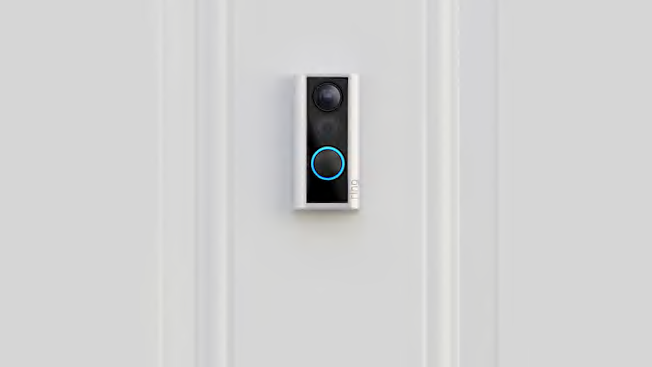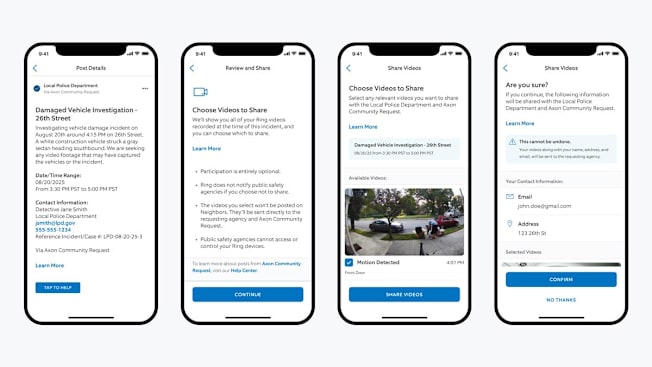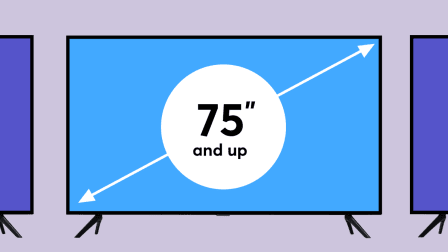Ring Is Again Letting Police Request User Videos Through Its Neighbors App
The new tool, Community Requests, closely resembles a controversial program canceled in 2024

Last week, Amazon home security brand Ring quietly rolled out a program called Community Requests to help police obtain videos captured with Ring security cameras.
It mirrors a previous effort, called Request for Assistance (RFA), that Ring shuttered in 2024. The new version is being run in partnership with Axon, a manufacturer of police body-worn cameras and tasers that also operates a digital evidence management system for law enforcement agencies.
How Community Requests Work
Police departments can post a Community Request in the Neighbors by Ring app after a crime is reported. The request includes information about the incident, a time frame of up to 12 hours for requested camera footage, the investigating officer’s contact information, and a map of the area where the request is being made.
If you accept a request, Ring’s app will show you all your footage from the requested time period. You can then select which individual recordings you want to submit. Confirm that you’re submitting footage, and the police will also receive your name, email address, and phone number.
Ring users can choose to anonymously ignore a request without police officials knowing, according to the company. And users can opt out of receiving the notifications entirely (see “How to Turn Off Community Requests,” below).

Source: Ring Source: Ring
Previous Police Program Canceled In 2024
Ring’s Request for Assistance process worked very similarly to the new Community Requests program. Police would publish an RFA post in the Neighbors app, and Ring users could choose to respond and submit their camera footage. Ring users could opt out of that program, just as they can now with Community Requests.
The RFA tool was available to at least 2,500 police agencies when CR tallied them in April 2023.
How to Turn Off Community Requests
You can turn off Community Requests from the Ring Neighbors settings.
Open the Neighbors by Ring app and go to the Neighbors feed. At the top right of the feed, tap on the gear icon followed by Neighborhood Settings under your town’s name.
From there, tap Feed Settings and scroll down to Community Requests under Post Types. Finally, de-select the checkbox next to Community Requests and click the Apply button.




















